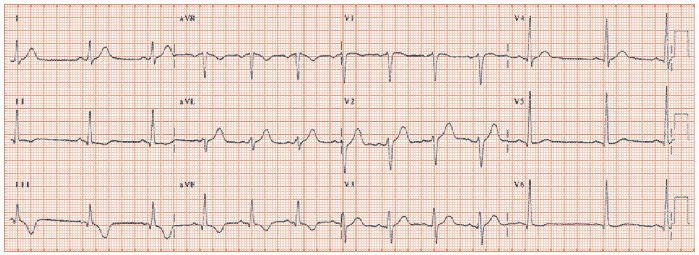Fig. 52.2 (a) Sick sinus syndrome (SSS). The rhythm is sinus (P wave before each QRS, no non-conducted P waves). The rate is far from regular, slow initially, then speeding up and then slowing down. These rate changes are too much to be explained by sinus arrhythmia, and indicate bradycardic SSS. The underlying ECG is unremarkable except for inferior lead (II, III, aVF) T wave inversion lead II, extending laterally to V6 as T wave flattening. This may indicate right coronary artery ischaemia; many cases of SSS are due to sinus node artery disease (a branch of the right coronary artery). (b) Rhythm strip from the patient in (a), later on. Atrial fibrillation (completely irregular baseline, fine fibrillatory wave, irregular QRS response). Three ventricular premature contractions occur later on.


Fig. 52.3 Cartoon showing sinus bradycardia due to sick sinus syndrome giving way to atrial fibrillation (AF) (no P waves, irregularly irregular QRS complexes). When the AF terminates, there is a prolonged pause before the sinus node starts firing again. During this pause patients may blackout.

The sinus node beats at an intrinsic rate, modified by neural impulses to beat slower (sleep) or faster (exercise). The sinus node should therefore respond in a predictable way to neural impulses. On occasions, disease of the node (‘sick sinus syndrome [SSS]’) affects the intrinsic rate and/or the way in which the node responds to neural impulses. Several varieties of sinus node disease are recognized.
Overt SSS with inappropriate bradycardia
Stay updated, free articles. Join our Telegram channel

Full access? Get Clinical Tree


